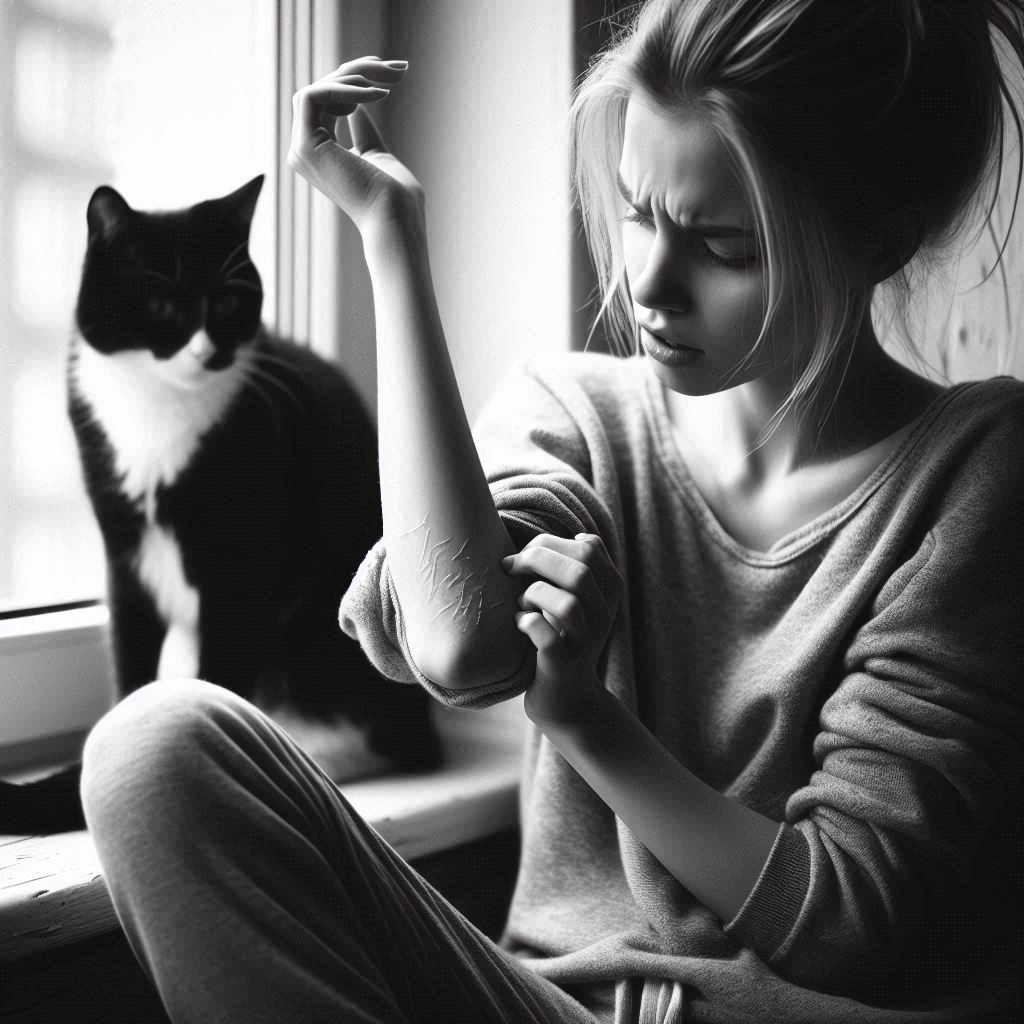Feeling a tingling sensation, dizziness, or muscle tension? These symptoms might lead you to worry about serious neurological disorders, but they can also be manifestations of anxiety. Anxiety, a common yet often misunderstood condition, can produce a wide range of physical symptoms that mimic those of neurological issues. Recognizing these symptoms accurately is crucial for proper diagnosis and treatment.
Many people unknowingly mistake these anxiety-induced symptoms for something more severe, leading to unnecessary stress and medical investigations. By understanding the connection between anxiety and its physical signs, you can approach your health with a clearer perspective. This post will delve into the nuances of anxiety-related symptoms, offering insights to help differentiate between anxiety and neurological disorders.
Understanding Anxiety and Neurological Disorders
Anxiety and neurological disorders can often exhibit symptoms that overlap, leading to potential misinterpretations and misdiagnoses in medical settings. Understanding the distinctions between anxiety-related symptoms and those stemming from neurological conditions is crucial for accurate diagnosis and appropriate treatment.
Neurological Conditions and Anxiety
Certain neurological conditions, such as Parkinson’s disease, multiple sclerosis, epilepsy, and traumatic brain injuries, can present with symptoms of anxiety. Studies have shown that anxiety disorders are even more prevalent than mood disorders in patients with neurological conditions, emphasizing the intricate relationship between the two. The complex interplay between neurological disorders and anxiety underscores the need for comprehensive evaluation by healthcare professionals to differentiate between the two sets of symptoms.
Anxiety-Induced Tingling Sensations
Anxiety-induced tingling sensations are a common occurrence that can be misconstrued as nerve-related disorders due to their physical nature. Individuals experiencing anxiety may feel tingling in their extremities, often described as pins and needles. This sensation is a result of the body’s stress response, triggering heightened nerve sensitivity. Recognizing that tingling sensations can be a manifestation of anxiety rather than a neurological issue is pivotal in avoiding unnecessary diagnostic confusion.
Dizziness: An Overlapping Symptom
Dizziness is another symptom that can overlap between anxiety and neurological disorders, posing challenges in accurate diagnosis. Anxiety-induced dizziness may stem from hyperventilation, changes in blood pressure, or heightened stress levels. It is essential to consider the emotional and psychological aspects of dizziness to differentiate it from dizziness caused by underlying neurological conditions. By delving into the nuanced connections between anxiety and dizziness, healthcare providers can offer targeted interventions for symptom management.
Muscle Tension and Anxiety
Muscle tension is a prevalent physical symptom associated with anxiety, often leading individuals to mistake it for a neurological problem. Anxiety can trigger muscle tightness and discomfort, particularly in areas like the shoulders, neck, and back. Understanding the correlation between muscle tension and anxiety is pivotal in discerning between psychological stressors and true neurological impairments. Real-life scenarios highlighting the relationship between muscle tension and anxiety can shed light on the importance of holistic assessments in clinical practice.
By unraveling the complexities of anxiety and neurological disorders, healthcare professionals and individuals alike can navigate symptoms effectively, fostering accurate diagnoses and tailored management strategies for improved well-being. Heightened awareness of the nuanced interplay between these conditions is key to promoting comprehensive healthcare approaches that address both mental and physical aspects of well-being.
Recognizing the Signs
When experiencing symptoms like tingling sensations, dizziness, or muscle tension, it’s crucial to recognize the signs that could be attributed to anxiety rather than neurological disorders. Through proper understanding and awareness, individuals can differentiate between anxiety-induced symptoms and genuine neurological conditions, leading to appropriate care and management.
Medical Evaluation and Diagnosis
Seeking professional medical evaluation is paramount to rule out neurological disorders when faced with anxiety-related symptoms. Healthcare providers play a pivotal role in accurately diagnosing the underlying causes of these symptoms. Comprehensive assessments, which may include neurological exams, imaging tests, and thorough medical history reviews, are essential in determining the nature of the symptoms and guiding towards an informed diagnosis (source).
Mind-Body Connection
The intricate relationship between mental health and physical symptoms underscores the significance of holistic approaches in addressing anxiety and its physical manifestations. Understanding how stress and anxiety impact the body can aid in managing symptoms effectively. Integrative practices such as mindfulness, yoga, and cognitive-behavioral therapy can help individuals address both the psychological and physical aspects of anxiety, promoting overall well-being and resilience (source).
By recognizing the signs early on, individuals can take proactive steps in differentiating between anxiety-related symptoms and neurological conditions, enabling them to seek appropriate support and interventions tailored to their specific needs.
Seeking Proper Treatment
When experiencing anxiety-induced physical symptoms, seeking proper treatment is crucial for effectively managing the condition and improving overall well-being. Tailored care that combines therapy, lifestyle adjustments, and potentially medication can significantly alleviate symptoms and enhance daily functioning.
Therapeutic Interventions
Therapeutic interventions play a vital role in addressing anxiety symptoms. Cognitive-behavioral therapy (CBT) is a widely recognized form of therapy that helps individuals identify and modify negative thought patterns contributing to anxiety. By learning new coping strategies and behavioral techniques, individuals can better manage their symptoms and improve their quality of life. Mindfulness practices, including meditation and deep breathing exercises, can also be beneficial in cultivating relaxation and reducing stress levels.
Self-Care Strategies
Implementing self-care strategies is essential for individuals dealing with anxiety-induced physical sensations. Practical tips such as maintaining a balanced diet, staying physically active, and getting an adequate amount of sleep can positively impact overall well-being. Additionally, incorporating relaxation techniques like progressive muscle relaxation, guided imagery, or yoga can help reduce muscle tension and promote relaxation. Stress management methods, such as journaling, spending time in nature, or engaging in creative activities, can provide valuable outlets for emotional expression and stress relief.
Seeking the right combination of therapeutic interventions and self-care strategies tailored to individual needs is key to effectively managing anxiety symptoms and promoting emotional well-being. By taking proactive steps to address anxiety-related concerns, individuals can work towards improving their mental health and overall quality of life.
For more information on anxiety treatment options, you can refer to reputable sources like Managing and treating anxiety and Anxiety disorders – Diagnosis and treatment.
Key Takeaways
Understanding the distinction between anxiety symptoms and those associated with neurological disorders is crucial for accurate diagnosis and treatment. Here are some key takeaways to keep in mind:
1. Neurological Symptoms Can Mimic Anxiety
It’s essential to recognize that symptoms such as tingling sensations, dizziness, muscle tension, and even cognitive difficulties can be present in both anxiety and neurological disorders. Understanding the nuances and subtle differences between these manifestations is vital in determining the underlying cause.
2. Importance of Differential Diagnosis
Differential diagnosis, which involves systematically distinguishing between two or more conditions with similar symptoms, is fundamental in differentiating anxiety from neurological disorders. Medical professionals employ various assessment tools, imaging studies, and diagnostic tests to arrive at an accurate diagnosis.
3. Psychological Factors in Neurological Presentations
Anxiety and stress can exacerbate or even manifest as neurological symptoms. Recognizing the role of psychological factors in amplifying physical symptoms is crucial in providing holistic care to individuals presenting with complex symptomatology.
4. Collaborative Care Approach
Collaboration between neurologists, psychiatrists, psychologists, and other healthcare providers is essential in addressing the multifaceted nature of symptoms that may stem from both anxiety and neurological conditions. A multidisciplinary approach ensures comprehensive assessment and tailored treatment plans.
5. Patient Education and Empowerment
Educating patients about the interplay between mental health and neurological symptoms empowers them to actively participate in their care. Providing resources, support, and clear information can alleviate anxiety associated with symptom misinterpretation and promote better health outcomes.
For further information on the relationship between anxiety and neurological disorders, refer to reputable sources such as Understanding Neurological Anxiety: A Closer Look and Anxiety Causes Neurological Symptoms.
Glossary
Understanding the nuances of anxiety disorders, particularly in young adults, is crucial in differentiating symptoms that might be mistaken for neurological issues. Research indicates that anxiety is prevalent among young adults, with increasing rates observed in recent years. (Goodwin, R. D.) When exploring anxiety disorders in young adults, considering the various types is essential:
Generalized Anxiety Disorder (GAD)
Generalized Anxiety Disorder (GAD) stands out as one of the most common types of anxiety experienced by young adults. It manifests as excessive worry, fear, or tension, often centering on everyday concerns. Understanding the symptoms and treatment options for GAD can aid in differentiating anxiety from neurological conditions. (Newport Institute)
Social Anxiety Disorder
Social anxiety, also known as social phobia, is another form of anxiety that frequently affects young adults. Individuals with social anxiety disorder experience intense fear or anxiety in social situations, leading to avoidance behaviors. Recognizing the distinct characteristics of social anxiety can prevent misinterpretation as neurological symptoms. (SAMHSA)
Panic Disorders
Panic disorders encompass sudden and recurrent episodes of intense fear or discomfort, commonly accompanied by physical symptoms like heart palpitations and sweating. Young adults struggling with panic disorders may exhibit symptoms that overlap with certain neurological conditions. (NIMH)
By delving into the specifics of each anxiety disorder prevalent in young adults, one can grasp the distinct features that differentiate them from potential neurological issues. Recognizing the subtle yet crucial disparities between anxiety symptoms and neurological manifestations is vital for accurate diagnosis and treatment in this demographic.
Conclusion
Recognizing the distinction between anxiety symptoms and neurological disorders is essential in ensuring appropriate care. Tingling sensations, dizziness, and muscle tension can often be attributed to anxiety rather than more severe neurological issues.
Understanding these symptoms’ origins facilitates more accurate diagnoses and better-targeted treatments. This knowledge empowers individuals to seek appropriate medical advice and support, mitigating unnecessary worry and improving overall well-being.








